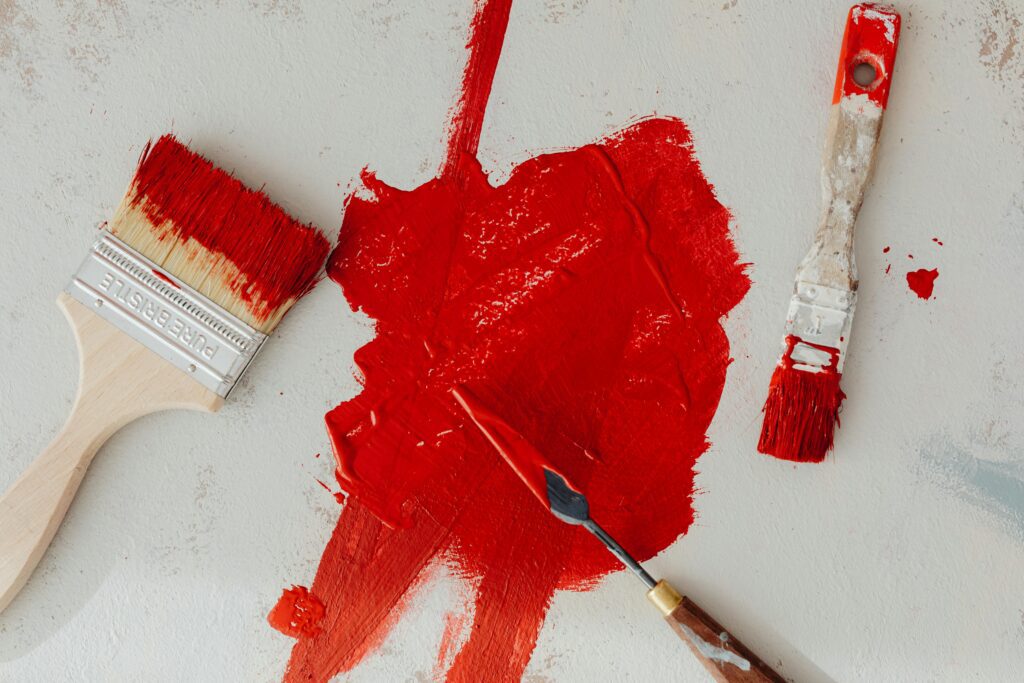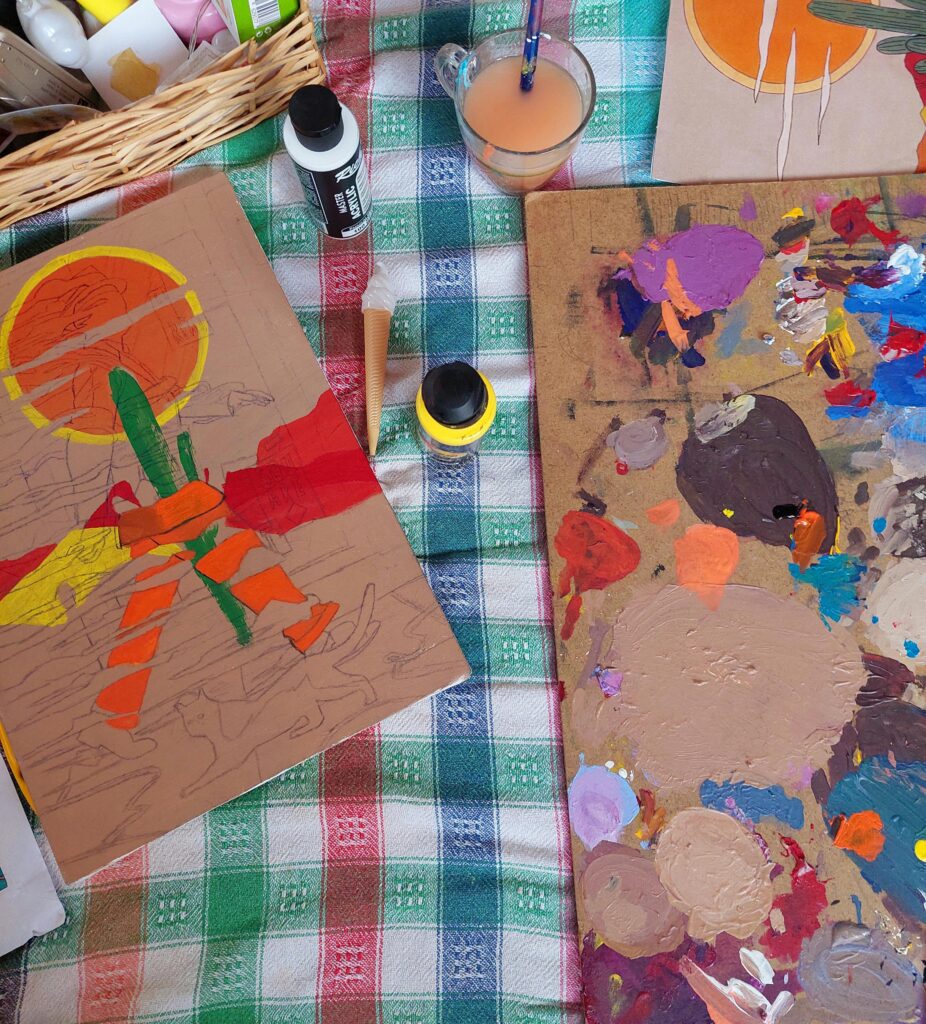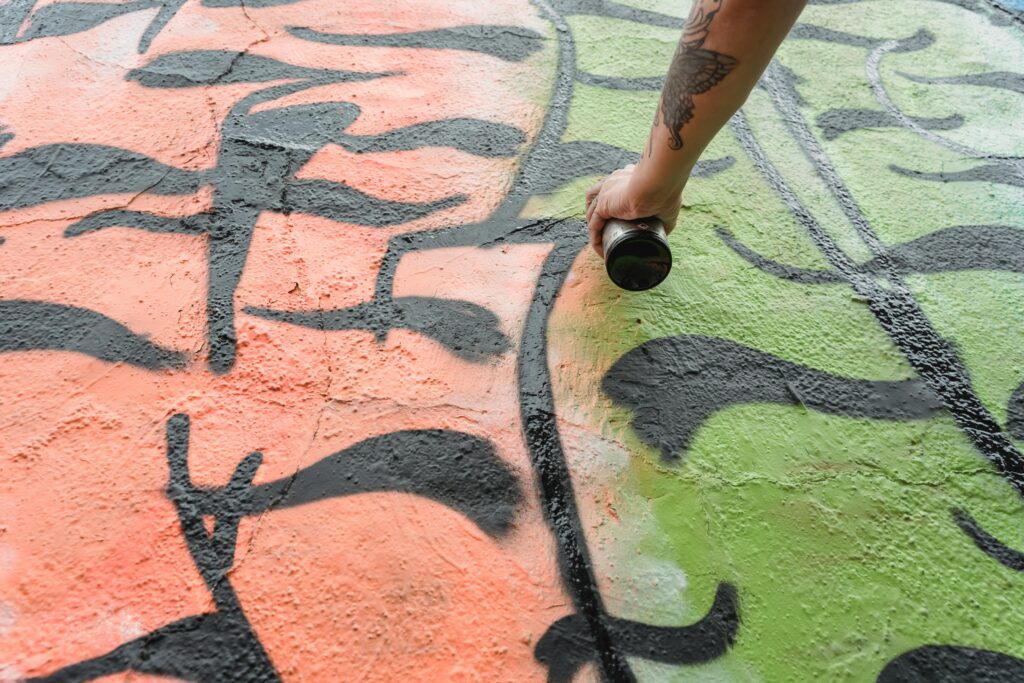Red Flags to Watch For Before Signing a Gallery Agreement

You know that feeling when you split a bill with friends and somehow end up paying way more than what you ordered? That’s how a lot of artists feel when they first see a gallery’s commission rate. Fifty percent , sometimes more , can sound like daylight robbery when you’re the one who spent months creating the work. But that number isn’t random, and understanding where it comes from changes everything about how you approach it.
Gallery commissions are less about greed and more about systems. Rent, staff, marketing, shipping, openings , all of it adds up to a business model that’s built to survive, not just display. The trouble is, artists are rarely told why those numbers exist or how flexible they can be. You’re just handed a contract and expected to nod along, even when something doesn’t sit right.
Here’s the thing most artists never realize: commission structures aren’t carved in stone. They’re built on relationships, reputation, and the kind of work you’re showing. Some galleries are open to conversation if they see long-term potential in you, while others follow fixed percentages out of habit or policy. Knowing the difference between the two can save you more than just money , it can save you from feeling powerless.
Negotiation in the art world isn’t about being confrontational, it’s about clarity. It’s knowing what value you bring to the table and what the gallery offers in return. It’s about aligning interests, not battling egos. Because when both sides feel respected, the collaboration tends to last.
So before you sign on the dotted line, let’s pull back the curtain. How do galleries actually decide their cut? When is it fair, when is it flexible, and when should you politely push back? Once you understand the structure, you stop feeling like you’re splitting the bill blindfolded , and start feeling like an equal at the table.

Why Gallery Percentages Aren’t Random Numbers
When you first hear a gallery takes 40%, 50%, or even 60% of a sale, it can feel unfair , like they’re profiting off your months of labor. But those percentages aren’t pulled out of thin air. They’re built on the reality of how galleries keep their doors open. Rent, insurance, staff, marketing, utilities, exhibition costs , every show they host carries financial weight. The commission isn’t just a cut of your earnings, it’s how they cover the cost of creating a space where your work can be seen.
Still, that explanation alone doesn’t make it feel less painful. Especially when you’re the one stretching canvas, buying supplies, and living through the anxiety of whether the show will sell at all. But understanding that those numbers represent more than a transaction is step one in reclaiming your power in the conversation. You can’t negotiate what you don’t fully understand.
Most mid-level galleries operate on a standard 50/50 split , you get half, they get half. Smaller, independent spaces might take less, especially if you’re handling part of the logistics yourself. Blue-chip galleries, on the other hand, often take more, but they’re also investing heavily in collector relationships and brand prestige that can double your long-term value. Each setup has its own math, and learning that math keeps you from feeling blindsided.
The problem is, artists often enter these agreements emotionally, not strategically. You’re excited, validated, maybe even a little scared to rock the boat. So you agree without reading the fine print, assuming the gallery must know what’s fair. But “standard” doesn’t always mean right for you.
When you start viewing commissions as a business model rather than a moral issue, something shifts. You stop seeing it as “they’re taking from me” and start thinking, “what are they offering in return?” That single shift in mindset is where real negotiation begins.
At the end of the day, it’s not about percentages, it’s about value exchange. And that’s something you can question, discuss, and shape , once you know the landscape.
What You’re Actually Paying For
Every artist knows what it costs to make the work, but few stop to calculate what it costs to sell it. That’s where the gallery comes in. Their commission covers everything you don’t see , the lighting, the champagne at openings, the client dinners, the emails to collectors, the press releases, and the quiet follow-ups that lead to sales. When a gallery earns its percentage, it’s because it’s doing the invisible work of keeping your art in circulation.
Of course, not all galleries put in the same effort. Some go above and beyond , nurturing your career, advocating for your work, bringing your name into rooms you couldn’t access alone. Others, let’s be honest, hang your paintings and hope someone walks in. Knowing which type you’re dealing with changes everything about how you interpret that commission cut.
The real question isn’t “Why do they take 50%?” It’s “What are they doing to earn that 50%?” Are they handling shipping, framing, or PR? Are they bringing in serious collectors or just foot traffic? Are they managing post-sale logistics or leaving that to you? Once you start breaking it down like that, the numbers tell a clearer story.
Many artists are afraid to ask those questions because they worry it’ll sound confrontational. But asking isn’t accusing , it’s clarifying. You’re not saying you don’t trust them; you’re saying you want to understand the partnership you’re entering. That’s not only smart, it’s professional.
If you wouldn’t hire a contractor without knowing what’s included in the price, you shouldn’t hand over half your sale without the same clarity. The gallery’s role is to amplify your reach, not to drain your earnings. When both sides know what’s expected, the relationship becomes collaborative instead of transactional.
The truth is, you’re not just paying for representation , you’re paying for reach, for trust, and for a seat in a market that still runs on relationships. The trick is to make sure that investment is paying off.
When High Commissions Actually Make Sense
Here’s the twist: sometimes, the higher the cut, the better the deal. It all depends on what you’re getting back. If a gallery is bringing your work in front of serious collectors, covering exhibition costs, and building your long-term reputation, that 50% becomes part of your growth strategy, not a loss. The right gallery can elevate your value faster than you could alone.
The key is to zoom out from short-term profit and look at the long-term payoff. One sale at a small cut might feel better in the moment, but if that gallery doesn’t help your trajectory, you’re just making isolated sales, not building a career. A higher-commission gallery that nurtures your name and secures coverage might lead to bigger, steadier income down the road.
You can think of it like marketing , you invest now to gain later. The difference is, your investment isn’t money you pay upfront; it’s the percentage you agree to share. The return comes in visibility, access, and credibility that can’t be bought outright. That’s why some artists happily accept steep commissions from powerhouse galleries , because the exposure alone shifts their market standing.
That said, “high” should never mean “unchecked.” If a gallery is taking 60% but barely promoting your work, something’s off. Always measure their involvement against their percentage. The more they do, the more justifiable the rate. The less they do, the more room you have to negotiate.
When you start seeing commissions as strategic partnerships instead of losses, you’ll start choosing galleries more intentionally. Not every one of them deserves your percentage , but some absolutely do.
A fair deal doesn’t mean an equal split; it means an equitable one. And that’s a difference every artist should learn to recognize early on.

When to Question the Numbers
There’s a moment in every artist’s career when something just doesn’t feel right. Maybe you’re doing all your own promotion, arranging your own shipping, and still handing over half the sale. That’s the moment to pause and ask, “Is this setup still fair?” Because commissions aren’t just a tradition , they’re a reflection of shared effort.
If you’re doing more of the heavy lifting, the structure should shift. Maybe you propose a lower cut, or a sliding scale depending on who brings the sale in. For example, if the collector found you directly, it’s reasonable to suggest a smaller commission. This isn’t arrogance; it’s alignment. You’re making sure everyone’s compensated in proportion to their contribution.
Another time to question the numbers is when you notice inconsistency. Some galleries apply their commission unevenly , taking more from emerging artists who don’t know better, and less from established names. That power imbalance keeps artists stuck in silence. But the moment you ask for transparency, the dynamic changes. You stop being “just another artist” and start being a professional partner.
Timing matters too. Don’t question the split mid-show or after sales start rolling in. Bring it up before signing or early in planning. That way, it’s a conversation, not a confrontation. Most gallerists respect artists who approach business with confidence and curiosity, not passivity.
If the gallery resists even a discussion, that’s also an answer. Fair partnerships are built on mutual respect, not secrecy. And any gallery worth staying with knows that clarity benefits both sides.
Remember, negotiation isn’t conflict , it’s collaboration in disguise. You’re not asking for more; you’re asking for balance.
How to Start the Negotiation Without Burning Bridges
The hardest part of any negotiation isn’t what you ask , it’s how you start. Tone matters. The goal isn’t to “win” but to create understanding. A simple opener like, “Can we go over the terms together? I’d love to understand how your commission structure works,” goes a long way. You’re inviting dialogue, not demanding changes.
Most galleries appreciate artists who show business awareness. It tells them you’re serious, professional, and thinking long-term. The key is to keep your tone conversational, not defensive. Approach it like you would a collaboration, not a correction.
Preparation helps too. Do your homework. Know what similar galleries charge, what’s standard for your region or experience level, and what extras they typically handle. When you speak from information, not emotion, you come across as confident instead of combative.
It’s also okay to set boundaries kindly. If the proposed split doesn’t feel right, say something like, “I value working with you, but I’d love to find a structure that makes sense for both sides.” That phrasing keeps the door open while asserting your needs.
The biggest mistake artists make is staying silent out of fear. You won’t lose opportunities by asking thoughtful questions , you’ll actually gain respect. The galleries that get defensive when you ask for clarity are rarely the ones that help your career flourish.
Think of negotiation as part of your creative practice. You’re shaping the conditions that allow your work to thrive. And that’s just as important as the art itself.
Red Flags in Gallery Contracts
Before you sign anything, read it like your future depends on it , because it does. Contracts are where fairness either lives or dies. The biggest red flag is vagueness. If a clause doesn’t clearly spell out who handles what, who pays for what, and when payments are due, you’re leaving too much room for confusion later.
Watch out for blanket clauses that let the gallery take commission on any sale, even those that happen outside their space or after the show ends. Unless they directly facilitated that sale, that clause is unfair. It happens more often than you’d think, especially with newer artists who don’t realize they can ask for revisions.
Another warning sign is delayed payment terms. Some contracts say the artist will be paid “within a reasonable time” , that’s not good enough. Get specific. Two weeks after sale? Thirty days? Vague timelines are where money goes missing.
Also, check for hidden costs. Who covers shipping, insurance, and framing? Some galleries pass those on quietly, cutting into your profit even more. Transparency here is non-negotiable.
If you’re unsure, run the contract by a more experienced artist or arts lawyer. It’s not overkill; it’s protection. A single sentence can determine how you get paid, how much you lose, or how you walk away.
Your signature should never come from excitement alone. Let it come from confidence. When you understand the document, you’re not just an artist showing work , you’re a professional building one.

The Gray Area: When a “Standard” Isn’t So Standard
Here’s something most artists don’t realize until they’ve been through a few shows, not every “standard gallery commission” actually means the same thing. One gallery’s 50/50 split might include marketing, framing, and shipping costs, while another might expect you to cover those out of pocket. That’s why it’s so important to read every word of your agreement before signing anything, no matter how friendly the gallery feels. A 50% cut can feel very different depending on what’s included in their end of the deal.
If you find that the gallery offers very little in terms of promotion or collector outreach, it’s completely fair to ask questions about where their share goes. Transparency isn’t confrontation, it’s collaboration. You’re not calling them out, you’re making sure you’re on the same page. This is part of being a professional artist, not a “difficult” one.
Sometimes, galleries genuinely assume artists know what’s covered and what’s not, especially in long-standing arrangements. But clarity is power. If the gallery keeps a high commission without contributing to visibility or logistics, that’s a gap worth discussing. It’s not about demanding more, it’s about aligning expectations.
Think of it like splitting a restaurant bill, it only feels fair when everyone knows what they ordered. If you’re covering more than your share but still giving away half the sale, something needs to be revisited. The best partnerships happen when both sides feel their contributions are valued.
The moment you start looking at “standard” not as a rule but as a reference point, everything shifts. You realize how much flexibility exists once you’re informed. And in an industry where many decisions are made quietly, informed artists tend to stand out as confident, grounded, and respected collaborators.
Timing Your Negotiation (So You Don’t Kill the Vibe)
Negotiation isn’t just about what you say, it’s about when you say it. Too soon, and it can sound defensive. Too late, and you might come across as unprepared. The best time to bring up commissions or adjustments is right after the gallery expresses clear interest in showing your work but before any paperwork is signed. That’s your window to talk openly while the excitement is mutual and the logistics are still flexible.
Keep the tone friendly and curious. Instead of “Can you lower your cut?” try “Can we walk through what the commission covers?” That framing keeps the conversation collaborative, not transactional. You’re not asking for special treatment, you’re asking for clarity.
Also, be aware of timing within the year. Some galleries are more flexible during off-season months when they’re trying to fill calendar gaps or balance their roster. Others might offer better terms if you’re bringing in a new audience or handling your own press. The more you understand their rhythms, the more strategic your timing can be.
If the gallery says no to adjustments, don’t take it personally. Often, their structure is tied to contracts with other artists or long-term operational costs. What you can negotiate instead is support. Maybe they can cover transport, or offer a smaller fee on limited-edition prints. Flexibility doesn’t always mean a different percentage; it can mean creative problem-solving.
Learning to read timing well turns negotiation from something nerve-wracking into something almost natural. You’re not pushing back, you’re just engaging at the right moment. And that alone makes you memorable in a sea of artists who sign without ever asking.
When Exposure Is Actually Worth It
Every artist’s inbox has that email, “We can’t offer payment, but you’ll get exposure.” It’s almost become a punchline. But not all exposure is useless. The trick is knowing which kind has lasting value and which just drains your energy.
If a gallery has strong press coverage, collector attendance, or a history of sales from previous exhibitions, then yes, that exposure can translate into something tangible. But if the gallery’s audience is mostly other artists or casual visitors, you’re essentially doing unpaid labor. Ask where your work will be shown, who’s expected to attend, and how the event will be promoted. Those questions separate real visibility from empty promises.
Sometimes, “exposure” means access to curators or critics who could shift your career trajectory, and that’s a valid trade-off early on. The key is to make sure you’re not saying yes to every shiny opportunity. Exposure only matters if it leads to something beyond itself.
The most successful artists don’t chase every spotlight, they choose the ones that fit their goals. If your focus this year is connecting with collectors, then visibility in an academic or experimental context might not move the needle. But if your goal is credibility and critical recognition, that same opportunity could be gold.
So when someone says, “We can’t pay, but…” pause before you roll your eyes. Ask for specifics, measure the real reach, and decide whether that exposure aligns with your current strategy. Saying yes or no becomes easier when you know exactly what you’re getting in return.

Red Flags to Watch in Commission Deals
Not every gallery operates in good faith. Some rely on vague contracts, delayed payments, or confusing commission splits to keep artists quiet. The moment you sense something feels unclear or overly complicated, pay attention. A fair agreement doesn’t need fine print to hide behind.
One major red flag is when a gallery avoids giving written terms. A handshake deal might sound old-school charming, but it leaves you completely unprotected. Another is when they charge additional “fees” on top of their commission, like exhibition or handling costs that weren’t mentioned upfront.
Watch out for exclusivity clauses too. Some galleries quietly insert conditions that prevent you from showing similar works elsewhere, sometimes even after your contract ends. Always ask how long exclusivity applies, and to what region or body of work.
If you feel pressured to sign quickly, that’s another warning sign. Ethical galleries understand that artists need time to review terms. Any sense of urgency or guilt-tripping is not professionalism, it’s manipulation.
Trust your instincts. If something feels off, it usually is. The art world can be kind, but it can also be predatory. Protecting your work isn’t arrogance, it’s self-respect, and no gallery worth working with will ever fault you for it.
Knowing When to Walk Away
There comes a point when the best negotiation move is silence followed by a polite no. Saying no doesn’t make you ungrateful; it makes you discerning. If a gallery’s terms don’t align with your goals, or if you sense their interest is purely transactional, it’s better to walk away than to lock yourself into resentment.
Every artist who’s built a long career has a story of walking away from something that looked good on paper but didn’t feel right. Sometimes, that one “no” makes room for something better down the line. Respecting your boundaries is what attracts partnerships that respect you back.
It’s also worth remembering that galleries talk to each other, and so do artists. Maintaining professionalism, even when you decline, builds your reputation more than you think. Saying “I really appreciate the offer, but I don’t think this is the right fit for me right now” leaves the door open for future collaboration.
Walking away doesn’t mean you’ve failed. It means you’re prioritizing sustainability over short-term validation. The right fit might not come instantly, but it will come, and when it does, you’ll know exactly why all those earlier no’s were necessary.
In the long run, learning when to walk away is one of the quietest but strongest forms of confidence an artist can develop. It’s what turns opportunity from something you chase into something you choose.

Building Long-Term Relationships with Galleries
Negotiating well is only the first step, maintaining the relationship afterward is what truly builds your reputation. Galleries remember artists who communicate clearly, deliver on time, and show gratitude without people-pleasing. Professionalism is what turns one show into a recurring collaboration.
Check in after an exhibition, even if nothing sold. Ask how the response was, thank them for their effort, and express interest in future opportunities. Small gestures like that make a big difference. You become someone they enjoy working with, not just another name on their roster.
Keep them updated when you release new work or win awards. It’s not bragging, it’s maintaining connection. Many galleries appreciate being kept in the loop because it gives them reasons to re-engage with you later.
Remember that relationships are built over years, not exhibitions. Some artists get their biggest breaks through a gallery they first worked with on a group show years earlier. Every email, conversation, or shared success adds another thread to that professional bond.
When you treat galleries as long-term creative partners instead of short-term opportunities, everything changes. You stop worrying about whether you’re getting the “best deal” and start focusing on whether you’re building the best foundation for your career. That’s what turns negotiation into collaboration, and collaboration into longevity.
